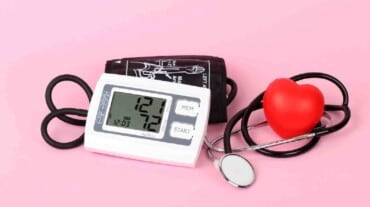Hypertension or hypertension happens when the strain of blood pushing towards the partitions of your arteries is an excessive amount of for them to deal with. A rise in your blood strain ranges can enhance the danger of coronary heart illness and stroke, two of the main causes of mortality throughout the globe. Among the finest methods to scale back the danger is by checking your blood strain frequently. This World Hypertension Day, let’s take a look at how one can measure your blood strain at dwelling.
Known as a ‘silent killer’, hypertension doesn’t present any vital signs. So, many individuals might not know that they’ve hypertension except they endure a coronary heart assault or stroke. That, undoubtedly, is just not a super state of affairs. So, it’s best to measure your blood strain ranges frequently to keep away from issues. Additionally, you possibly can’t go to a physician each time to get your blood strain checked.So one of the simplest ways is to have the appropriate tools to measure blood strain at dwelling.
How one can measure blood strain at dwelling?
Well being Pictures requested Dr Ashutosh Shukla, Senior Director and Medical Advisor, Max Hospital, Gurugram, to assist us perceive the appropriate solution to measure your blood strain at dwelling. Since maintaining a verify in your very important well being parameters is essential, right here’s to accurately measure your blood strain at dwelling.
Additionally Learn: 10 fast methods to deliver your hypertension down
1. Select the appropriate tools
You’ll need high quality blood strain monitor. You’ll be able to select a digital monitor which has a display that shows the readings. Make sure that the cuff suits correctly in your higher arm. Keep away from devices that measure BP on the wrist.
2. Put together for the measurement
Earlier than taking your blood strain, it’s best to keep away from smoking, train, and caffeine for at the least half-hour.
3. Apply the cuff
Place the cuff round your higher arm and regulate it so it suits snugly. Make sure that there may be extra hole than two fingers between the cuff and your arm.
4. Take the studying
Place the monitor on the stage of your coronary heart. Sit again in your chair and chill out. Press the beginning button in your monitor. It is going to inflate the cuff after which slowly launch the air. The monitor will show your systolic (high quantity) and diastolic (backside quantity) blood strain readings.
5. File the outcomes
Don’t overlook to notice your blood strain readings together with the date and time of recording them. Preserve observe of your readings over time and share them along with your medical doctors and comply with their recommendation and prescribed medicines.
Know your blood strain ranges
Once you measure your blood strain, you will note two numbers seem – one on the high and one on the backside. However have you learnt which one quantity signifies what? Dr Shukla shares that the highest quantity is the systolic strain and the underside quantity is the diastolic strain. The systolic strain reveals the utmost strain created in your arteries and the diastolic strain is the minimal strain created in your arteries.
Additionally Learn: Warning indicators your artery is blocked: Right here’s the best way to forestall coronary heart assault
Listed below are the conventional and elevated blood strain ranges it’s best to learn about:
- Regular blood strain: Systolic strain beneath 120 mm Hg and diastolic strain beneath 80 mm Hg (lower than 120/80 mm Hg)
- Elevated blood strain: Systolic strain between 120 and 129 mm Hg, and diastolic strain beneath 80 mm Hg (between 120/80 mm Hg and 129/80 mm Hg).
Now that you already know what elevated blood strain ranges appear like, you might want to know the phases of hypertension and when you have to be apprehensive.

Stage 1 hypertension
A systolic blood strain between 130 and 139 mm Hg, and diastolic strain between 80 and 89 mm Hg (between 130/80 mm Hg and 139/89 mm Hg).
Stage 2 hypertension
A systolic strain of 140 mm Hg or greater, and a diastolic strain of 90 mm Hg or greater (140/90 mm Hg or greater).
In case your blood strain ranges are elevated, it’s best to seek the advice of your well being adviser to keep away from issues and hold ailments at bay.
